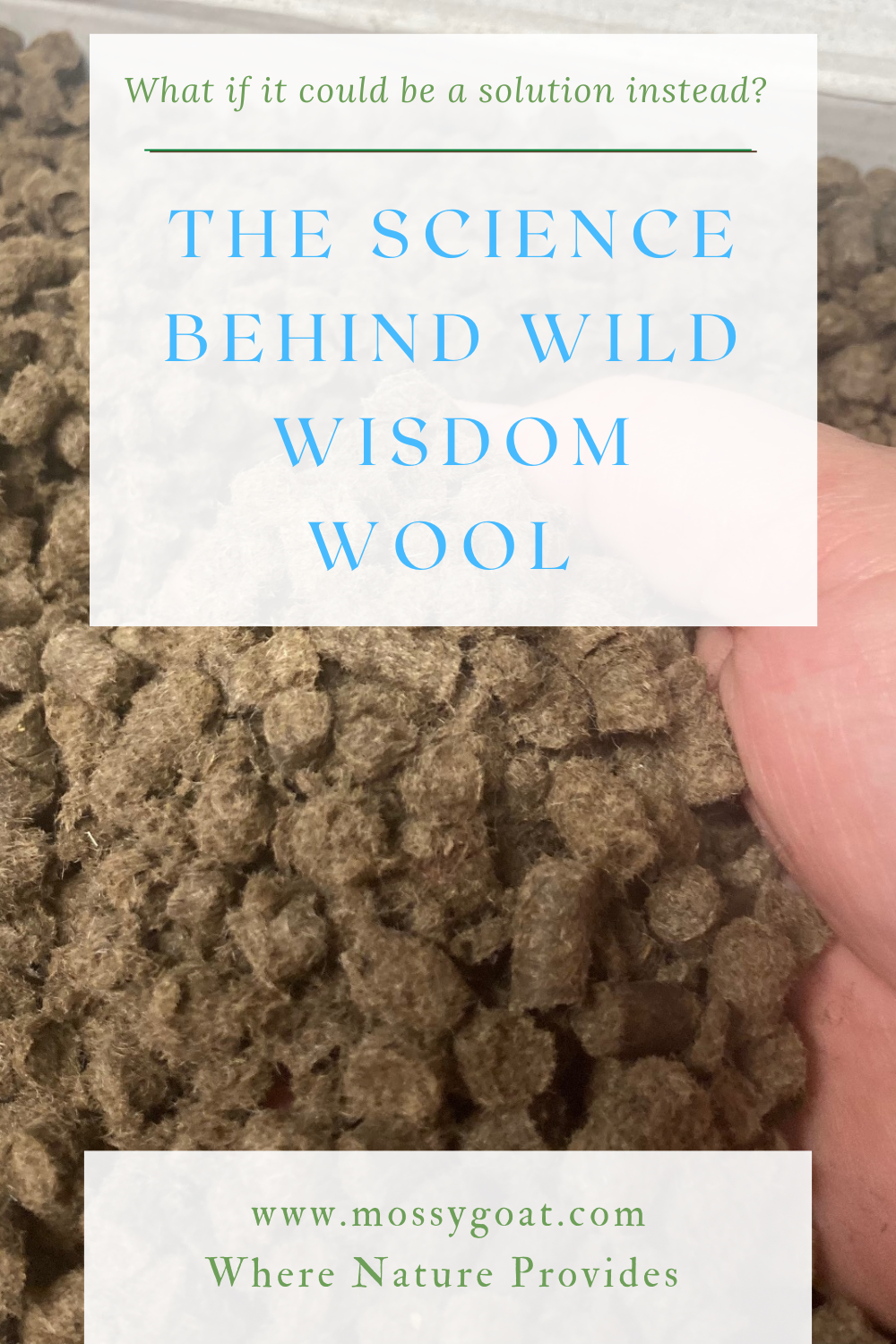The Science Behind Wild Wisdom Wool for Plants
The idea behind Wild Wisdom Wool started on an innocuous winter day. The morning started for us, like many days in contemporary life, by casually browsing the internet over coffee. You never know what appears on the next scroll, and on that particular day it brought opportunity. Kimberly was reading the online articles on Modern Farmer when one story in particular caught her eye: ‘Waste Wool’ is a Burden for Farmers. What if it Could be a Solution Instead? The proposition was intriguing. What if our sheep could be both our passion and solution. Kimberly holds a B.S. in Environmental Science and sustainable agriculture. Aware of the benefits of wool for plants, we had been using scrap wool fleece in our garden already. The idea that raw wool could be made into pellets was a turning point for the future of our small family farm.
The University of Vermont was one of the first American institutions to study wool pellets as a way revitalize the sheep industry in Vermont. The summary of their findings can be found here. They had several test farms grow broccoli with a control group of the farm’s usual fertilizing protocol. The results showed the wool pellets to outperform or match the control groups in performance.
As it turns out, the University of Vermont is not the only American University with an interest in wool pellets. Wool pellets have also caught the eye of the Ohio State University Sheep Team. In their article Four Reasons to Introduce Wool into your Garden the University Sheep Team summarizes:
“Benefits of using ‘waste wool’ in the garden:
Reduced grow time for vegetables
Water savings
Softens hard clay soils
Pest control
All-natural/organic properties
And perhaps most importantly, sheep ranchers who had been selling waste wool for as little as $0.05/lb. could now get more than 10x that”
But the University of Vermont and Ohio State University are not the only ones studying using sheep wool as a soil amendment.
The Science Behind Wool Pellets
Wool Pellets Are a Viable Alternative to Commercial Fertilizer for Organic Vegetable Production by Dr. Elena Testani
Eco-Friendly Processing of Wool and Sustainable Valorization of This Natural Resource by Crisan Popescu and Michaela Dina Stanescu
Evaluation of Sheep Wool as a Substrate for Hydroponic Cucumber Production by Monika Komorowska, Marcin Niemiec, Jakub Sikora, Zofia Gródek-Szostak, Hatice Gurgulu, Maciej Chowaniak, Atilgan Atilgan and Pavel Neuberger
The Potential of Recycling Wool Residues as an Amendment for Enhancing the Physical and Hydraulic Properties of a Sandy Loam Soil by Ahmed Abdallah, Francesca Ugolini, Silvia Baronti, Anita Maienza, Francesca Camilli, Laura Bonora, Francesca Martelli, Jacopo Primicerio, Fabrizio Ungaro
Assessment of Utilization of Sheep Wool Pellets as Organic Fertilizer and Soil Amendment in Processing Tomato and Broccoli by Elena Ordiales, Juan Ignacio Gutiérrez, Lorena Zajara, Jesús Gil, and Manfred Lanzke
Wool-Waste as Organic Nutrient Source for Container-Grown Plants by Valtcho D. Zheljazkov, Glenn W. Stratton, James Pincock, Stephanie Butler, Ekaterina A. Jeliazkova, Nedko K. Nedkov, Patrick D. Gerard
Now that the science is established, let’s look at what other people have to say about using waste wool in the garden.
Articles
Waste Wool Works Wonders by Matt Hargreaves for the Utah Farm Bureau
Sweaters for the Soil by Elise Koning featured for Ambrook Research
All About Wool Pellets as Soil Amendments by Bailey Van Tassel, Home Garden
10 Reasons to Use Wool Pellets in Your Garden by Kestrel Ridge
Mulching with Sheep’s Wool by Sara Backmo
Six Good Reasons Why You Should Use Wool in Your Garden by Dan Cooper Garden
The science and personal experiences are beginning to add up. Using sheep’s wool in your garden and for your plants is an earth-friendly and sustainable solution to many unsustainable problems such as throwing away wool in landfills, dwindling peat moss supplies, and toxic fertilizers and slug repellents. Mossygoat Farm is excited to be part of this groundbreaking solution. We are the farm Where Nature Provides and wool can provide for our gardens as a form of a peat moss alternative, slow-release nitrogen, as well as a slug repellent. Plus, wool pellets hold up to 20x their weight in water.
Wool garden mulch and wool pellets available in our store. Sign up for our email list below to become a friend of the farm.


